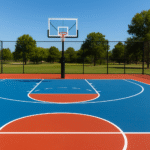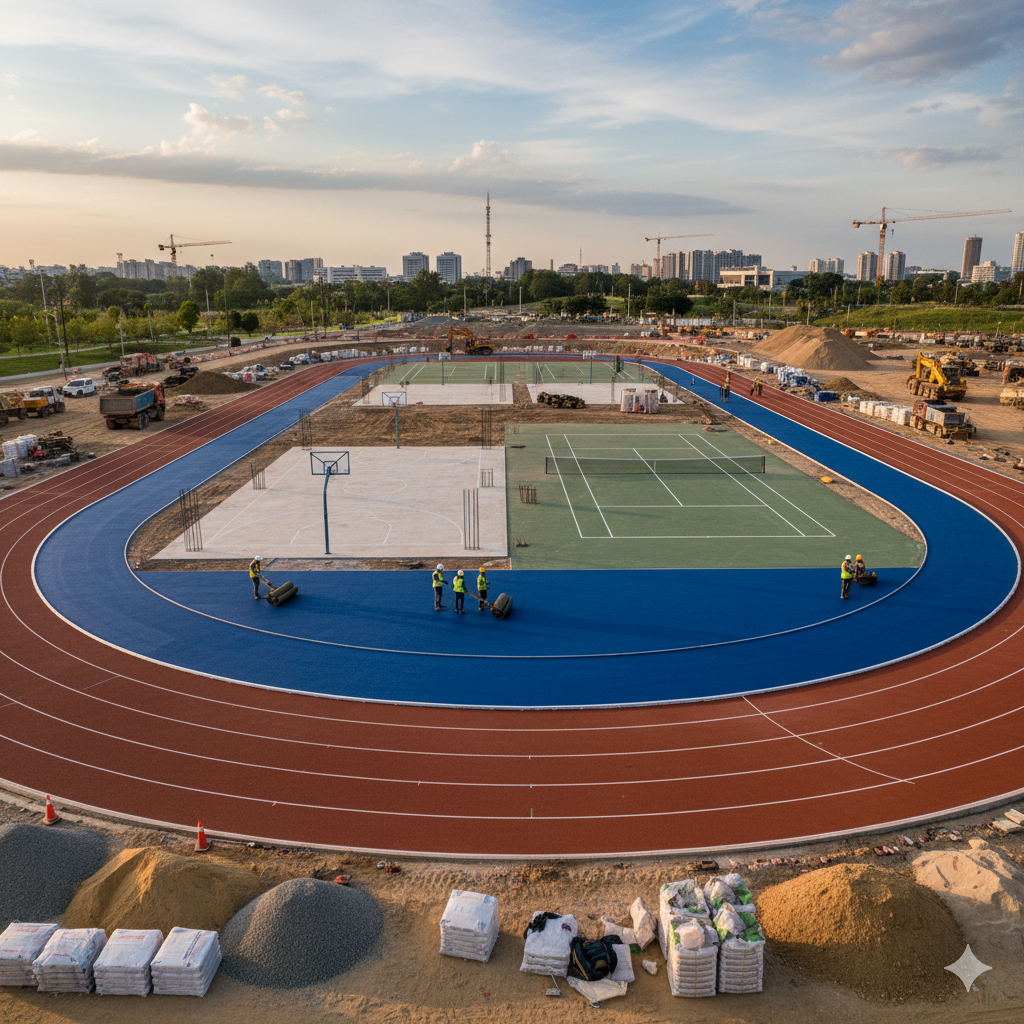Introduction
Have you ever wondered why jogging tracks in parks, schools, and sports complexes feel so comfortable and safe to run on? That’s because professionally designed jogging tracks follow specific standards for safety, durability, and performance. These tracks aren’t just about aesthetics—they are meticulously engineered to reduce impact on joints, improve grip, and provide a pleasant experience for runners of all ages.
From community parks to professional sports academies, building a properly designed jogging track is essential for daily fitness, recreational running, and athletic development.
What is a Standard Jogging Track?
A standard jogging track is typically a 200 to 400-meter track designed for recreational and professional running. Its length, width, and curvature are planned to ensure safety and comfort for joggers and runners. Unlike competition tracks, jogging tracks focus more on cushioning, durability, and accessibility for users of all skill levels.
Dimensions of a Jogging Track
-
Total Length: Usually 200–400 meters per lap
-
Lane Width: 1.5–3 meters per lane (single or multiple lanes possible)
-
Total Area: Varies depending on the layout and park/stadium size
These dimensions ensure ample space for runners, allowing smooth movement and safe overtaking without collisions.
Materials Used in Jogging Track Construction
Modern jogging tracks are constructed using materials that provide comfort, safety, and durability:
-
Polyurethane Surfaces: Water-resistant, durable, and slip-proof
-
Rubberized Flooring: Offers excellent shock absorption to protect joints
-
Eco-Friendly Composites: Sustainable options with long-lasting performance
These materials create a safe, enjoyable environment for both casual joggers and serious runners.
Construction Process
Building a jogging track involves:
-
Planning and Site Selection: Choose a flat, well-drained location accessible to users
-
Base Preparation: Lay an asphalt, concrete, or compacted foundation for stability
-
Surface Installation: Apply polyurethane, rubberized, or composite layers professionally
-
Line Marking and Finishing: Optional lane lines, distance markers, and start/finish indicators
Professional construction ensures longevity, even wear, and a safe running surface.
Jogging Track Flooring Options
Depending on your budget and intended use, you can choose from:
-
Polyurethane System: Durable, water-resistant, ideal for all weather
-
Rubberized System: Soft and shock-absorbing for joint protection
-
Prefabricated Sheets: Quick installation with uniform surface quality
Selecting the right surface enhances running comfort and reduces long-term maintenance costs.
Standards for Jogging Track Construction
Certified sports court manufacturers follow strict guidelines for safety, durability, and performance. Even though jogging tracks are not used for international competitions, professional construction ensures:
-
Comfortable shock absorption
-
Slip-resistant surfaces
-
Long-lasting performance
Cost of Jogging Track Construction
Costs vary based on:
-
Track length and width
-
Surface type (polyurethane, rubberized, or prefabricated)
-
Site preparation and accessibility
-
Local labor and material costs
In India, a standard jogging track may cost between ₹50 lakh – ₹1.5 crore, depending on specifications.
Benefits of a Jogging Track
-
Encourages daily fitness and outdoor activity
-
Reduces impact on joints compared to concrete surfaces
-
Provides a safe, structured environment for running
-
Enhances the value of sports complexes, parks, and schools
Maintenance of Jogging Tracks
-
Sweep and clean regularly to remove debris
-
Inspect for cracks or wear periodically
-
Resurface every 8–10 years depending on traffic and usage
Proper maintenance ensures the track remains safe and durable for years.
Future Trends in Jogging Track Flooring
-
Eco-Friendly Materials: Sustainable, non-toxic, and weather-resistant
-
Enhanced Cushioning: Better shock absorption for joint protection
-
Smart Surfaces: Sensors for monitoring distance, pace, and performance analytics
Conclusion
A jogging track is far more than just a pathway for running—it serves as a dedicated platform for health, recreation, and community engagement. It provides a safe and comfortable environment for people of all ages to improve cardiovascular fitness, build endurance, and maintain overall wellness. Well-designed jogging tracks also encourage social interaction, allowing families, friends, and fitness enthusiasts to exercise together in a structured and enjoyable setting.
FAQs
- What are the standard dimensions of a jogging track?
Typically 200–400 meters long, 1.5–3 meters wide per lane. - Which materials are best for jogging track surfaces?
Polyurethane, rubberized, or eco-friendly composite surfaces. - How long does it take to construct a jogging track?
Usually 2–4 months depending on site preparation and surface type. - What is the average cost?
₹50 lakh – ₹1.5 crore in India, depending on size and material. - Why is surface type important?
It ensures safety, reduces joint impact, and increases the track’s lifespan.




